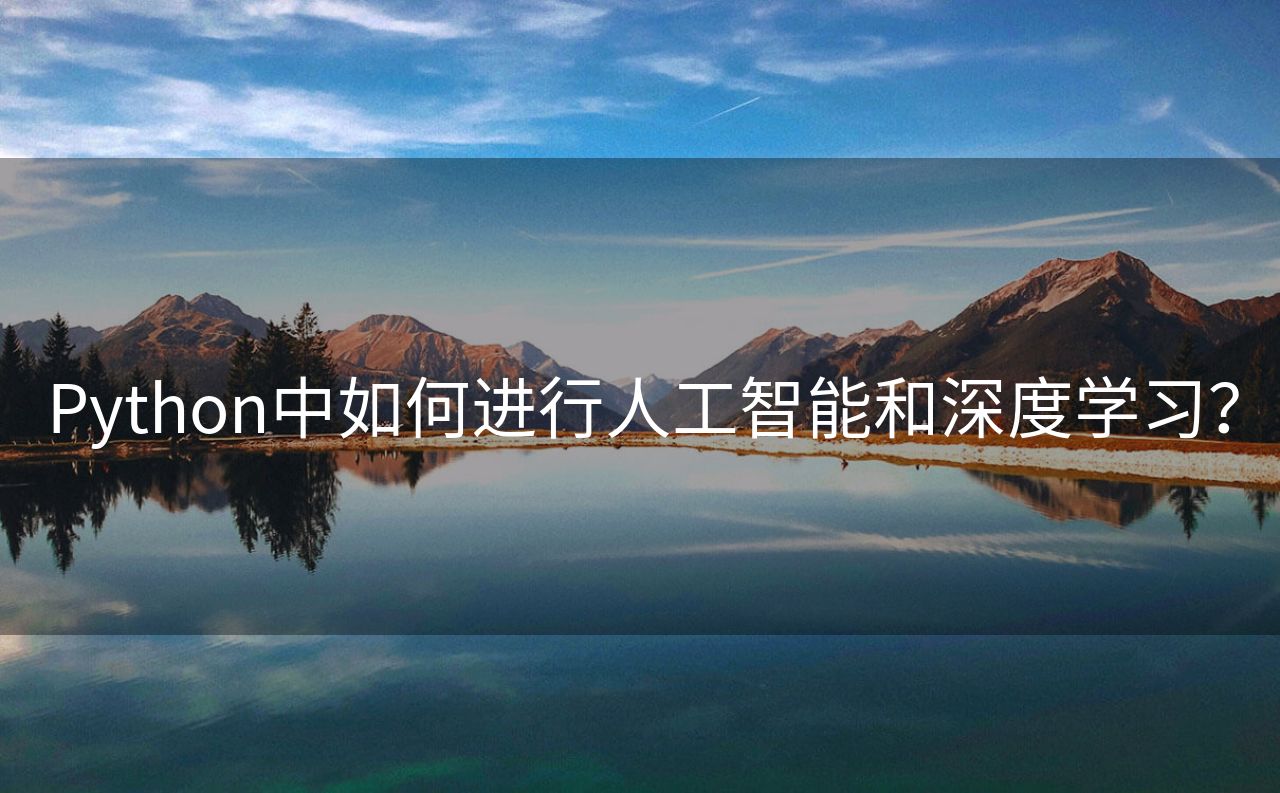人工智能和深度学习是当前最为热门的技术之一,而Python是人工智能和深度学习领域中最为流行的语言之一。本文将介绍如何在Python中进行人工智能和深度学习。
Python中的人工智能主要是通过一些流行的库来实现的,这些库包括:
import tensorflow
import keras
import scikit-learn
其中,TensorFlow是目前最为流行的深度学习框架之一,它提供了一些高级的API,使得开发者可以更加轻松地进行模型训练和推断。Keras是一个基于TensorFlow的高级神经网络框架,它提供了一些简单易用的接口和预训练模型,使得开发者可以快速地建立自己的神经网络模型。scikit-learn则是一个常用的机器学习库,它提供了很多经典的机器学习算法,例如支持向量机、决策树、随机森林等。
Python中的深度学习主要是基于TensorFlow或Keras来实现的,具体步骤如下:

在本节中,我们将演示如何使用Python和Keras来进行图像分类。
我们将使用MNIST数据集来进行图像分类。MNIST数据集包括60000张28×28的手写数字图片,以及10000张测试图片。我们将使用Keras自带的函数来获取这些数据:
from keras.datasets import mnist
(train_images, train_labels), (test_images, test_labels) = mnist.load_data()
我们将使用一个简单的神经网络模型来进行图像分类:
from keras import models
from keras import layers
network = models.Sequential()
network.add(layers.Dense(512, activation='relu', input_shape=(28 * 28,)))
network.add(layers.Dense(10, activation='softmax'))
我们使用训练数据对模型进行训练:
network.compile(optimizer='rmsprop',
loss='categorical_crossentropy',
metrics=['accuracy'])
train_images = train_images.reshape((60000, 28 * 28))
train_images = train_images.astype('float32') / 255
from keras.utils import to_categorical
train_labels = to_categorical(train_labels)
network.fit(train_images, train_labels, epochs=5, batch_size=128)
使用测试数据对模型进行评估:
test_images = test_images.reshape((10000, 28 * 28))
test_images = test_images.astype('float32') / 255
test_labels = to_categorical(test_labels)
test_loss, test_acc = network.evaluate(test_images, test_labels)
print('test_acc:', test_acc)
我们可以使用训练好的模型来对新的图片进行分类:
import numpy as np
from keras.preprocessing import image
img_path = 'path/to/image.jpg'
img = image.load_img(img_path, target_size=(28, 28), grayscale=True)
img_tensor = image.img_to_array(img)
img_tensor = np.expand_dims(img_tensor, axis=0)
img_tensor /= 255.
print(network.predict(img_tensor))
Python是人工智能和深度学习领域中最为流行的语言之一,它提供了很多流行的库,例如TensorFlow、Keras和scikit-learn等。通过这些库,开发者可以很容易地进行人工智能和深度学习的开发。

扫描二维码
与我联系

评论列表:
发布于 2月前回复该评论
发布于 2月前回复该评论
发布于 2月前回复该评论
发布于 2月前回复该评论
-
.jpg) danney
danney
- 非常棒谢谢了!
没有更多评论了发布于 2月前回复该评论